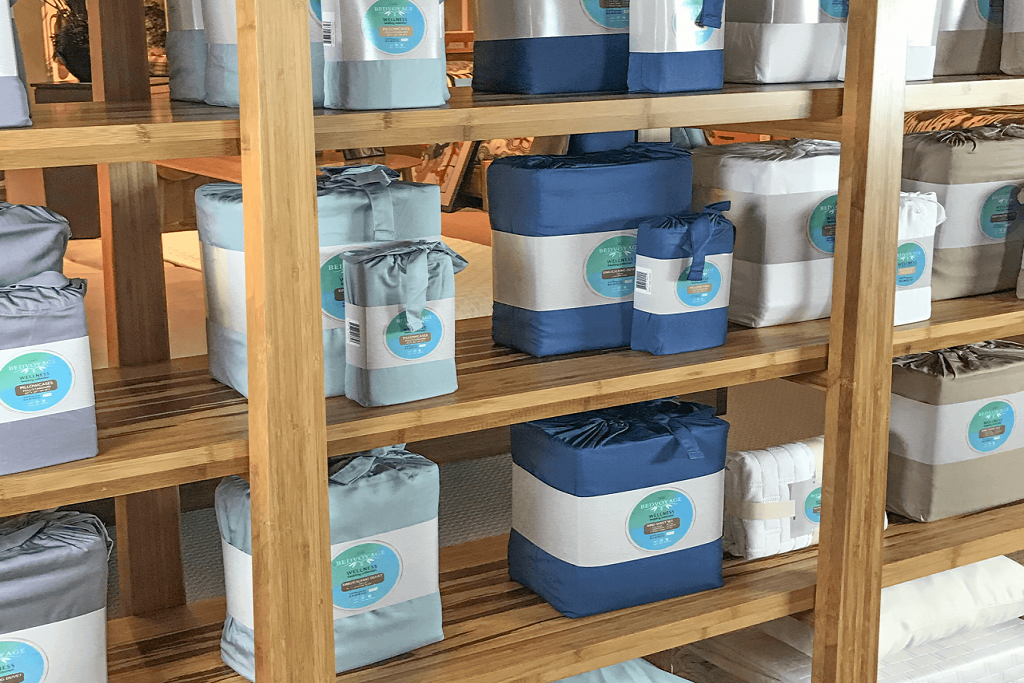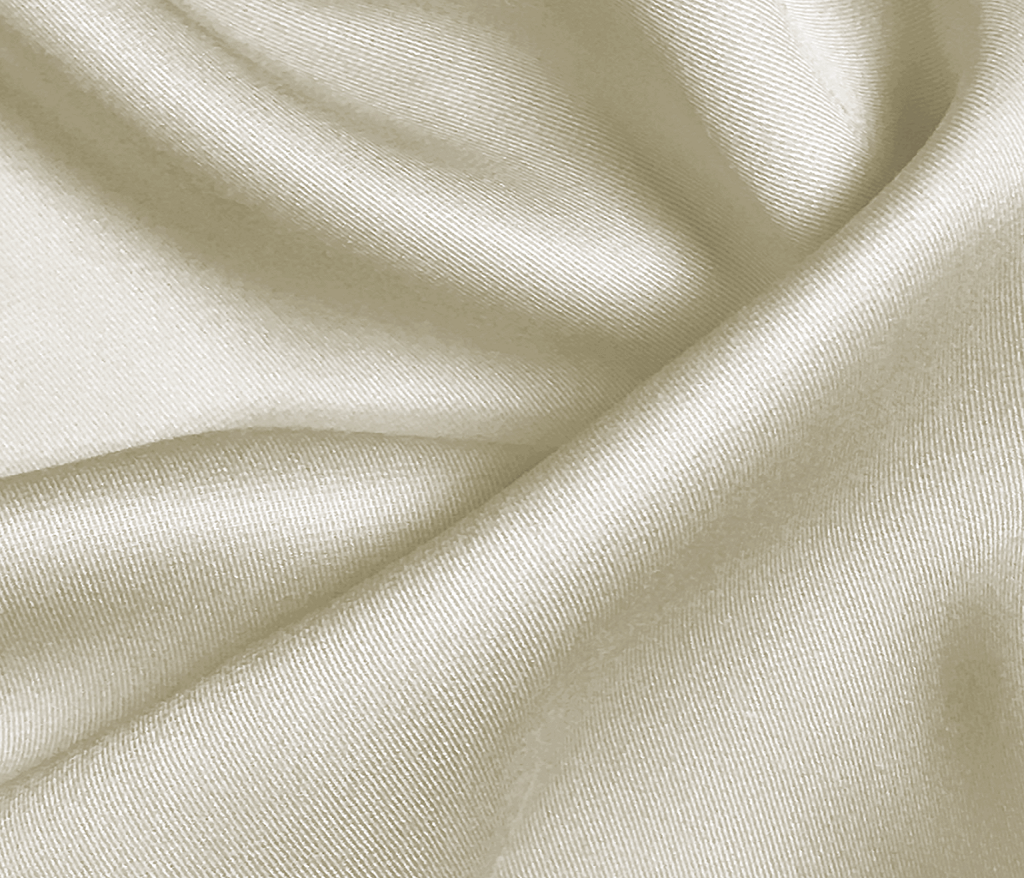Our Bamboo Process
From Farm to Fabric
We source our raw materials from non-polluted areas in India, using farms where moso bamboo is organically farm-raised specifically for linens.Natural cellulose (in this case originating from mechanically crushed bamboo leaves and stems) is used as the raw material in a hydrolysis–alkalization process.
- The cellulose of the crushed bamboo is ground up and run through a compression machine to become sheets of ‘paper’
- Sheets of ‘paper’ are set to dry for 24 hours
- After drying the paper is soaked in sodium hydroxide which wets the paper so that it becomes a viscose solution
- The viscose solution is then pushed through spinneret nozzles into a large tub of diluted sulfuric acid to harden the fibers.
- The fine, smooth tubular threads are then spun onto spools, in preparation for weaving.
BedVoyage’s factory weaves, dyes, cuts, sews and packages all products in a LEED certified factory. All chemicals used in the process of making the fabrics are reused and recirculated. No chemicals or dyes are spilled into the waterways or ground.*** No Caustic Soda used in our Viscose from Bamboo lines: Luxury Bamboo or Melange BambooREAD MORE about ourSUSTAINABLE PRACTICES HERE
What Are Fiber Reactive Dyes?
Fiber Reactive Dyes: Ensuring Permanent, Fade-Proof Colors Fiber reactive dyes are advanced textile dyes that create a covalent bond with textile fibers, ensuring vibrant and enduring colors. Unlike conventional dyes, this process guarantees a fade-proof finish, making it a superior choice for long-lasting textiles.
These dyes were initially developed to interact specifically with cellulose fibers like bamboo, linen, and hemp. During the dyeing process, the dye molecules permanently bond with the cellulose molecules, creating an irreversible connection. After thorough rinsing and drying, the dye sets permanently, ensuring that the colors will never fade or wash out. Though a more complex and costly process, fiber reactive dyes provide textiles with unmatched durability and color retention, making them ideal for high-quality, fade-resistant linens.
Why Do The Maternity Sheets Come In Only The Ivory Color?
BedVoyage's Maternity Sheets are made from our Ivory color because the Ivory color takes less dying, and no bleaching, as the natural fibers of bamboo are very close to the Ivory color. Although we only use Fiber Reactive Dyes for our other colors, those that may suffer from allergies, are pregnant, or have skin conditions may appreciate less dye to potentially aggravate symptoms.
Our line of Ivory Crib Sheets are great for babies, for the same above reasons. You can also view our Coverlets, Shams, and Duvet covers all made from Ivory Bamboo.
What Is Melange Bedding?
Melange is a blend of 50% premium bamboo yarns and 50% long-staple cotton yarns. The special texture-like look of melange is due to the twisting of bamboo and cotton threads together, onto a spool so that when woven they appear to have a texture. The unique waterless coloring method makes the colors deep and true, and they're bleachable and BPO safe. The line of melange bedding is a bit cozier and comfier than the 100% bamboo sheets.
Is Formaldehyde In Bed Sheets?
Formaldehyde is not in BedVoyage Bed Sheets! We don't coat our linens with formaldehyde, which is something that the cotton industry does to make their fabrics wrinkle-resistant.
Our goal is to offer the healthiest sleep environment as your pores open when you sleep, and you can absorb any toxic chemicals in your bedding. Because we don't use formaldehyde; you may experience light wrinkling where your body lays, but your next laundering will bring back smooth and silky linens!
Rayon Vs Viscose – Are They The Same?
Customers have pondered what the difference is between Rayon vs Viscose as a bamboo fabric term. We'll try to explain!
Viscose is described as a fiber made from regenerated wood cellulose. This means that it comes from the cellulose of the bamboo plant.
Rayon is described as a manufactured regenerated cellulose fiber, which is virtually the same as the viscose definition. One or both of these terms can be used when describing Bamboo linens. BedVoyage chose both terms for our fabric description, because we felt that customers can recognize one or the other.
Rayon fibers are not considered natural, or artificial. The reconstructed bamboo cellulose fiber is called regenerated-cellulose. This means a chemical change does happen in the processing of bamboo. There are many benefits to rayon/viscose from Bamboo bedding, compared to traditional cottons. One benefit is bamboo is naturally thermal regulating, so you'll sleep cooler. If you suffer from sensitive skin issues, bamboo is incredibly silky soft, comforting and hypoallergenic. Incredibly its also moisture wicking and resistant to odors and bacteria.
Why Don’t BedVoyage Sheets Pill?
Do Bamboo Sheets Pill? Not BedVoyage sheets, as we use a very fine twill weave to lock in the fibers to guarantee against pilling, so you’ll never experience anything but silky-smooth comfort against your skin.
Cotton, Linen and Flannels tend to pill, but BedVoyage linens will stay smooth and comforting against your skin.
If you looked under a microscope at bamboo threads they’d look round and smooth, whereas a cotton thread would look like a rough old rope. Simply run your hands across our bamboo fabrics, and you'll feel the incredible difference compared to cotton.




